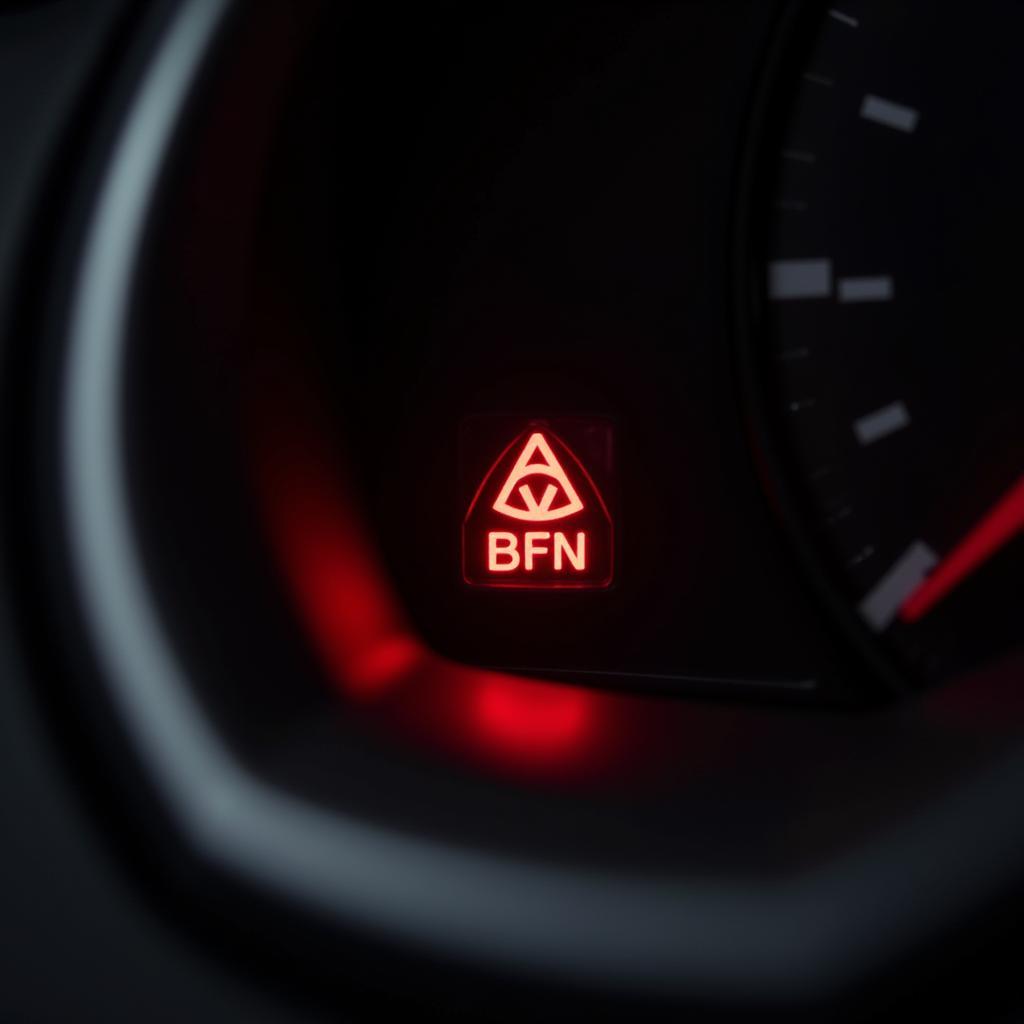The parking brake light warning on your dashboard is a crucial safety feature, alerting you if your parking brake is engaged or if there’s a fault in the system. A common culprit behind a persistent parking brake light warning is a blown fuse. This article will guide you through understanding, troubleshooting, and resolving issues related to the parking brake light warning fuse.
Understanding the Parking Brake Light Warning System
Your car’s parking brake system is designed with a safety mechanism that illuminates a warning light on the dashboard when the parking brake is engaged. This visual cue reminds drivers to release the brake before driving, preventing potential damage or accidents.
The system usually includes:
- Parking Brake Lever/Switch: Engaging the parking brake activates a switch that completes an electrical circuit.
- Brake Fluid Level Sensor: This sensor monitors the brake fluid level and can trigger the warning light if the fluid is low, potentially indicating a leak in the braking system.
- Wiring: A network of wires connects these components, carrying signals to and from the vehicle’s electrical system.
- Fuse: The parking brake light warning fuse protects the circuit from electrical overloads. If there’s a surge in current, the fuse will blow, breaking the circuit and preventing damage to other components.
- Warning Light: This light, often a red exclamation mark within a circle or the word “BRAKE,” illuminates on the dashboard when the circuit is closed, signaling an issue with the parking brake system.
Common Causes of a Blown Parking Brake Light Warning Fuse
- Short Circuit: A short circuit in the wiring harness connected to the parking brake system, often caused by damaged wires rubbing together, is a primary cause of a blown fuse.
- Faulty Switch: A malfunctioning parking brake switch can cause a continuous flow of current, overloading the circuit and blowing the fuse.
- Worn-out Wiring: Over time, wiring insulation can deteriorate, leading to exposed wires that can short circuit and blow the fuse.
- Water Damage: Exposure to moisture, such as driving through deep puddles or a leak in the vehicle cabin, can cause corrosion and short circuits in the parking brake system’s electrical components, including the fuse.
Troubleshooting a Parking Brake Light Warning Fuse
Before assuming a blown fuse, rule out other possibilities:
- Check Your Parking Brake: Ensure your parking brake is fully released. It might seem obvious, but sometimes the simplest solution is the right one.
- Inspect Brake Fluid: Low brake fluid can also trigger the warning light. Check your brake fluid level and top it off if necessary. Refer to your vehicle’s owner’s manual for the correct type of brake fluid and instructions on checking and topping up the fluid level.
If these checks don’t resolve the issue, the next step is inspecting the fuse:
Locating the Fuse
- Consult Your Owner’s Manual: The owner’s manual is your best friend. It will pinpoint the location of the fuse box and identify the specific parking brake light warning fuse.
- Fuse Box Identification: Fuse boxes are usually located under the dashboard, in the glove compartment, or under the hood. They’re typically labeled and have a diagram showing the location of each fuse.
Inspecting the Fuse
- Safety First: Before handling any fuses, turn off the vehicle’s ignition and disconnect the negative battery cable.
- Visual Inspection: Carefully remove the suspected fuse from its slot. You can use a fuse puller (usually found in the fuse box cover) or a pair of needle-nose pliers. Examine the fuse for a broken wire or a discolored metallic strip inside. This is a clear sign of a blown fuse.
Replacing the Fuse
- Match the Fuse: If the fuse is blown, replace it with a new one of the same amperage rating. The fuse box cover or your owner’s manual will indicate the correct amperage. Using a fuse with a different amperage can lead to further electrical problems.
- Correct Installation: Insert the new fuse firmly into the slot. Ensure it’s properly seated.
- Reconnect Battery: Reconnect the negative battery cable and turn on the ignition to check if the warning light is off.
“A word of caution: If replacing the fuse solves the problem temporarily but the warning light reappears, it indicates a deeper issue within the parking brake system. Don’t rely on continuously replacing the fuse as a permanent solution. It’s crucial to diagnose and address the root cause to prevent further electrical damage or safety hazards.” – Mark Stevenson, Senior Automotive Electrician
Seeking Professional Assistance
If you’re uncomfortable working with electrical components or if replacing the fuse doesn’t resolve the issue, it’s best to consult a qualified automotive electrician. They have the expertise and tools to diagnose and repair more complex electrical issues within the parking brake system, ensuring your vehicle’s safety and reliability.
Conclusion
Addressing a parking brake light warning fuse is crucial for maintaining your vehicle’s safety and preventing potential electrical problems. By understanding the warning system, knowing how to troubleshoot a blown fuse, and when to seek professional help, you can confidently address this issue and ensure a smooth and safe driving experience. Remember, a little knowledge about your car’s electrical system goes a long way!


